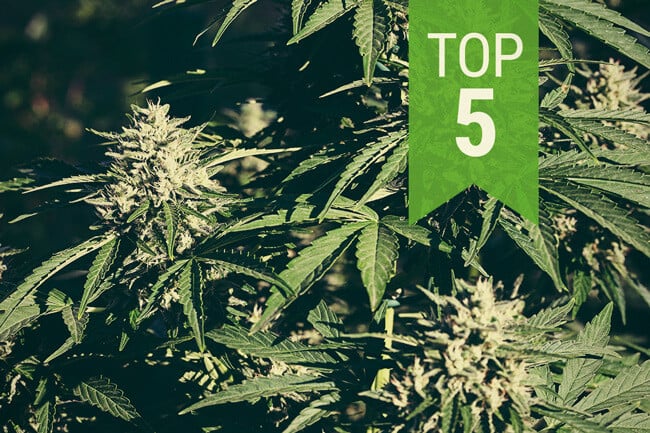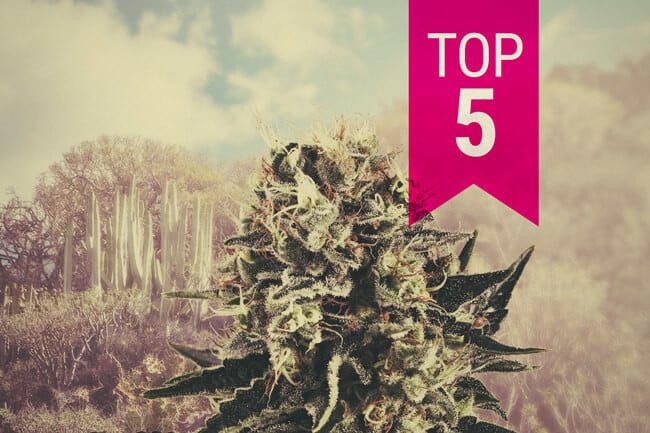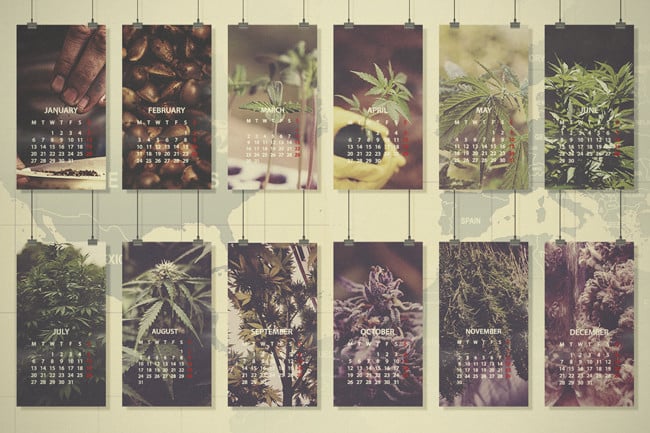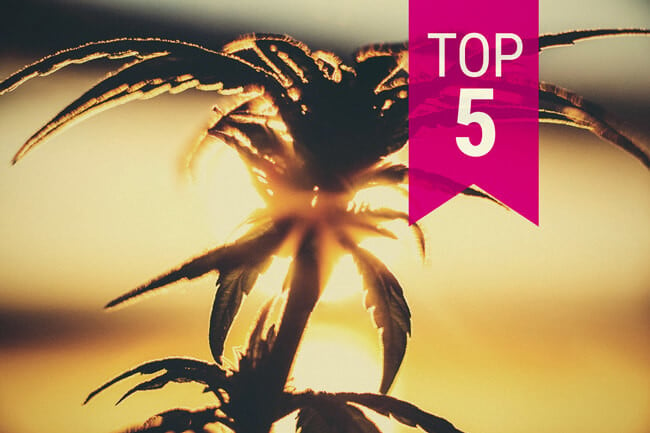.
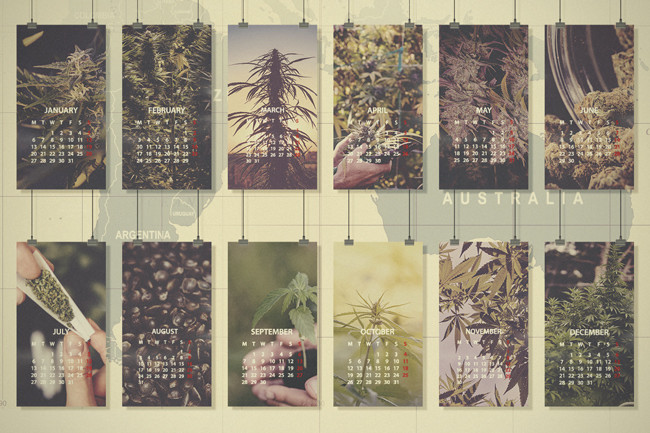
Cannabis Grow Guide: Central And South America
Latin America has a number of climates ideal for growing high-quality cannabis. Follow these season-by-season guidelines to ensure you get the best results from germination to harvest.
GROWING CANNABIS IN LATIN AMERICA
Latin America is a vast landmass that offers a diverse range of growing environments for the cannabis cultivating enthusiast. Mountains and valleys, dry altiplanos, coastal regions, and tropical islands are just a few of the climates where cannabis may thrive.
Cleft by the equator is Ecuador or “The Republic of the Equator”, the only country named after a mathematical geographical feature. Latin America shares two growing hemispheres, and except for Uruguay, southern Peru, and three quarters of Argentina, resides within the tropics. The distance from Cape Horn, way down at the chilly tip of Patagonia, to the Mexico-US border is nearly 11,000 kilometres. So over its entirety, Latin America has every type of climate available to the keen cannabis gardener.
Cannabis enjoys various forms of legal tolerance throughout much of Latin America. Laws may vary from country to country, but generally speaking, you aren’t going to get in trouble for discreetly blazing up a private stash. The same goes for growing plants for personal use; however, large crops for underground sale or exportation are still frowned upon.
ENVIRONMENTAL DIVERSITY MEANS COMPLEXITY
The geographical diversity of South America makes it difficult to give averages for temperatures. For example, the differences between coastal and mountain temps at the same latitude can vary considerably within only a few dozens of kilometres, as can climates affected by the Humboldt Current compared to climates at the same latitude to the east of the Andes.
Similarly, average day lengths differ noticeably when the whole region spans over more than 85 latitudes. Local knowledge and a sun and moon chart are invaluable components in a good cannabis grow. For the Tropic of Cancer, averages for Guatemala City are used; for the Tropic of Capricorn, Lima. For southern regions outside of the tropics, averages from Santiago are used.

WINTER
TROPIC OF CANCER
• AVG day length: Dec: 11h 16m, Jan: 11h 21m, Feb: 11h 40m
• AVG temp: Dec: 23°C, Jan: 23°C, Feb: 25°C
TROPIC OF CAPRICORN
• AVG day length: June: 11h 25m, July: 11h 28m, August: 11h 42m
• AVG temp: June: 20°C, July: 19°C, August: 19°C
SOUTHERN REGIONS
• AVG day length: June: 9h 56m, July: 10h 08m, August: 10h 52m
• AVG temp: June: 16°C, July: 15°C, August: 18°C
Whether it’s the dry season in the tropics or the cold and really cold season further south, successful growers are enjoying the buds from their most recent grow, and are planning next year’s crop. Strain performance and potency, growing problems and successes are personally reviewed so as to go bigger and better in the next grow season.
Equatorial growers who prefer autoflower varieties are tending to their fourth crop of the year. Although daylight hours aren’t optimal for growing weed, autoflowering strains will still produce quality flowers, only from slightly underdeveloped plants. Growing autoflowering varieties in the tropics circumvents the need to grow one large photoperiod crop by allowing four smaller crops over the whole year. This has the advantage of requiring less work per day for the same results.
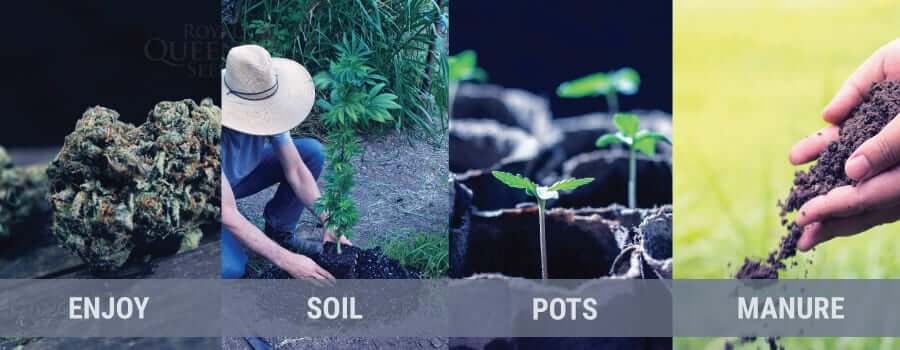
Growing outdoors predominantly means growing in some kind of soil, whether it be in pots or unrestrained beds of some form. Growing world-class weed is growing organic weed. After last year’s grow, soils will need to be amended and re-mulched in preparation for the nutritional demands of young plants next season.
The more work that is put into the soil, the better it will get over time, and weed will improve in quality year over year. This includes pots; there is no need to continually replace potting soil, just amend the old soil and a diverse microecology will develop. Even worms will live their lives in a pot.
Suggested amendments for the oncoming spring season are meals of many kinds, including alfalfa, clover, blood, fish, kelp, bone, and neem. Shell flours, rock dusts, various manures, composts, and worm castings will all make cannabis boom.
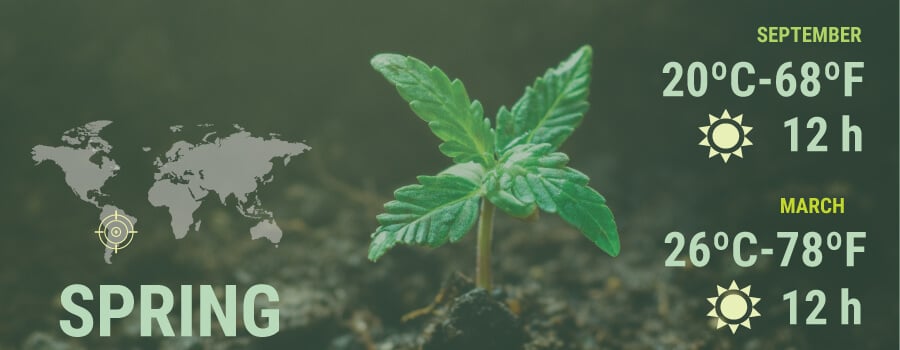
SPRING
TROPIC OF CANCER
• AVG day length: Mar: 12h 03m, April: 12h 28m, May: 12h 48m
• AVG temp: Mar: 26°C, April: 27°C, May: 26°C
TROPIC OF CAPRICORN
• AVG day length: Sep: 12h 01m, Oct: 12h 20m, Nov: 12h 40m
• AVG temp: Sep: 19°C, Oct: 20°C, Nov: 22°C
SOUTHERN REGIONS
• AVG day length: Sep: 11h 52m, Oct: 12h 54m, Nov: 13h 51m
• AVG temp: Sep: 19°C, Oct: 20°C, Nov: 21°C
The first month of spring features the vernal equinox, the all-important time when the full moon announces that all the days to follow until the autumnal equinox will be over 12 hours long. More than 12 hours of daylight is vital to healthy cannabis vegetation.
Within the tropics, it is safe to germinate cannabis now. Young plants will emerge and thrive in the warmth of the tropics and begin rapidly vegetating. Species selection is important when growing in the tropics. Fungal and bacterial resistance is of great benefit in often wet and always humid environments.
Sativa and sativa-dominant strains will thrive and flower without any problems. Indica strains will thrive during vegetation, but may have trouble switching to flowering, as night lengths do not extend rapidly enough to trigger the bloom phase. Light deprivation may need to be used to ensure flowering in more photo-dependant strains.
Outside of the tropics, although the days get longer quicker, the sun takes longer to get into the sky to give cannabis the full exposure it requires. Germinating in the second month of spring guarantees proper vegetation and the best end results. Germinating too early can confuse photoperiod plants and lower the yield and quality at the end of the flowering cycle.
In such circumstances, infant plants are told by the day length that they are in flowering mode. Then, a few weeks later, they are forced to switch back to full vegetation, then switch back again to flowering when autumn comes. Vegetating plants are still impressive, but final flowers are substandard and yields are low.
Wait until there is plenty of sun when growing naturally, or use supplemental lighting. Germinating plants earlier than true spring and giving them time under artificial light to increase vegetation time is one technique for getting larger plants where the veg season is shorter. Plants that are already well-established can be put outside when days are over 12 hours long. Once hardened off in a shady spot for two weeks, they will go into overdrive when they get into full sun.
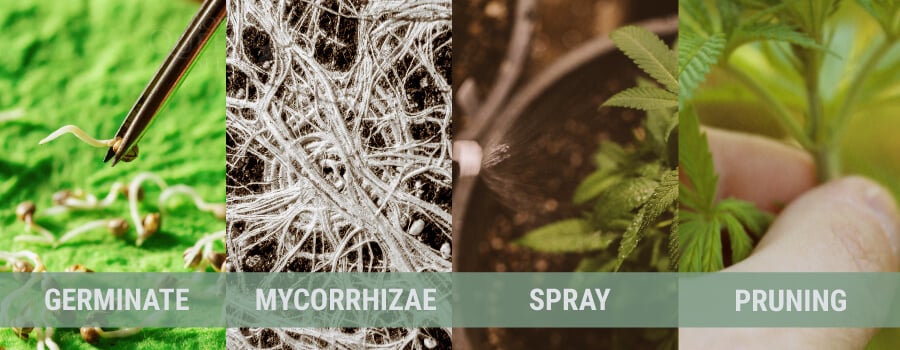
Add mycorrhizae to the root ball when transplanting infant plants into larger early vegetation pots—then again when transplanting into the final grow container. These beneficial fungi form a symbiotic partnership with the roots, increasing their surface area and improving overall performance. A healthy root biosphere also helps prevent root-borne diseases and improves overall immune resistance in plants.
Early spring is the time to begin topping plants to manipulate future growth patterns. Properly manicured and maintained plants will respond with vigorous growth and multiple flower sites. Evenly distributed canopies with open, well-cleaned branches underneath ensure utmost plant health.
Early spring is also the time to start spraying with select organic foliar applications, such as natural fungicides and pesticides like neem oil, and growth boosters like kelp or aloe vera. Always spray in the evenings.
Late spring is the time for amending soils again in preparation for the vegetative explosion of summer. This is when plants are striving to grow as many future flower sites as possible. The more a plant grows during vegetation, the more potential flower sites there are when autumn arrives.
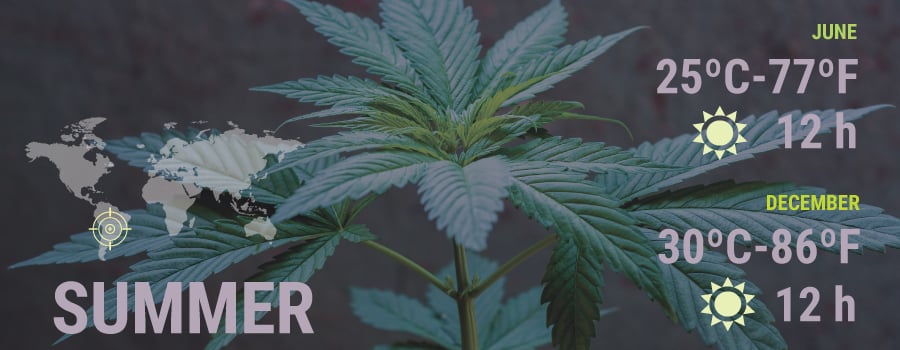
SUMMER
TROPIC OF CANCER
• AVG day length: June: 12h 59m, July: 12h 54m, August: 12h 36m
• AVG temp: June: 25°C, July: 24°C, August: 25°C
TROPIC OF CAPRICORN
• AVG day length: Dec: 12h 50m, Jan: 12h 45m, Feb: 12h 28m
• AVG temp: Dec: 24°C, Jan: 26°C, Feb: 27°C
SOUTHERN REGIONS
• AVG day length: Dec: 14h 21m, Jan: 14h 07m, Feb: 13h 10m
• AVG temp: Dec: 29°C, Jan: 30°C, Feb: 30°C
Summer is the time of rapid growth for the cannabis plant. Daylight hours are at their maximum, and plants that are watered regularly are in photosynthesis overdrive. Branches will need to be controlled for optimal sun penetration and air circulation. Stakes, wire cages, trellises, and plastic netting are all ways of training the cannabis plant for optimum performance.
Summer is also the time for maximum bug and pathogen activity. Continue foliar spraying as a preventative, and check plants often for signs of attack. Regularly adding beneficial root bacteria like trichoderma inoculates plants against root diseases and deters warm-weather-loving critters like root aphids. The symbiotic nature of these bacteria also increases root efficiency a hundredfold and stimulates plant growth. Feeding plants complex sugars like molasses and enzymes like malted barley or corn extracts keeps these bacterial colonies healthy.
.jpg)
Heat stress is avoidable by foliar spraying a selection of organic additives. Fermented seaweed, kelp and fish emulsions, as well as silica will increase heat tolerance by 300%. Silica has the added benefit of eliminating pests like spider mites and thrips. Then, once it migrates to the roots, will control root rot while making roots distasteful to harmful nematodes and larval insects.
Late summer is the time to amend the soil once more with bloom-friendly nutrients, minerals, enzymes, and amino acids. In preparation for the coming flowering phase, malted grains, worm castings, fermented aloe vera, and various rock dusts all provide essential flower-boosting compounds. Bone meal or rock phosphate and potash are excellent sources of phosphorus, calcium, and potassium for robust flower production.
Early-flowering varieties and a number of feminized hybrids will also be differentiating in late summer. Days have been growing shorter since the summer solstice. Shorter days can trigger some species to flower, while others respond to an internal clock and will flower when they please. These strains will be ready to harvest in the middle of autumn. “Normal” photoperiod strains still need to wait for the shorter days of autumn for flowering to be triggered, and will mature later in the season.
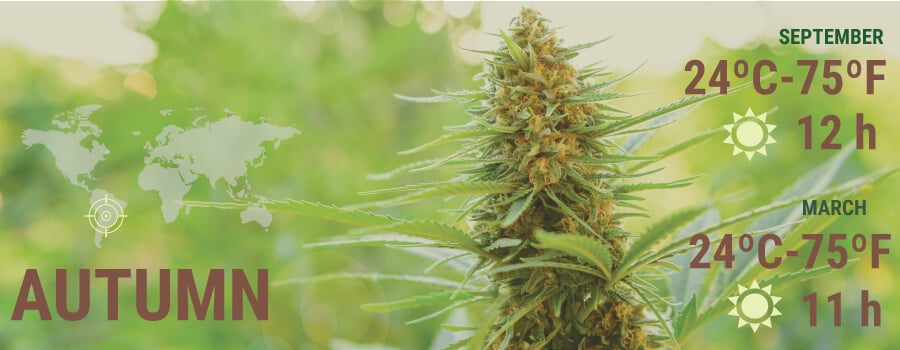
AUTUMN
TROPIC OF CANCER
• AVG day length: Sep: 12h 12m, Oct: 11h 48m, Nov: 11h 27m
• AVG temp: Sep: 24°C, Oct: 24°C, Nov: 23°C
TROPIC OF CAPRICORN
• AVG day length: Mar: 12h 10m, April: 11h 49m, May: 11h 33m
• AVG temp: Mar: 27°C, April: 24°C, May: 22°C
SOUTHERN REGIONS
• AVG day length: Mar: 12h 18m, April: 11h 15m, May: 10h 24m
• AVG temp: Mar: 28°C, April: 24°C, May: 20°C
In all climates, this is when the fun really begins. While early-flowering strains are already accumulating puff balls of pistils and calyxes, regular photoperiod strains are beginning to differentiate. Plants alter their silhouette as they begin to clearly sex by displaying calyxes or pollen pods.
Branches change their aspect and angle of growth, and may turn up at the ends. Plants start to become more asymmetrical, with the classic zig-zag pattern of nodes developing quickly. Soon, stretching of branches and formation of new nodes ceases, and flower formation begins. Plants still continue to grow larger as flower structures extend, but there is no new vegetative growth.
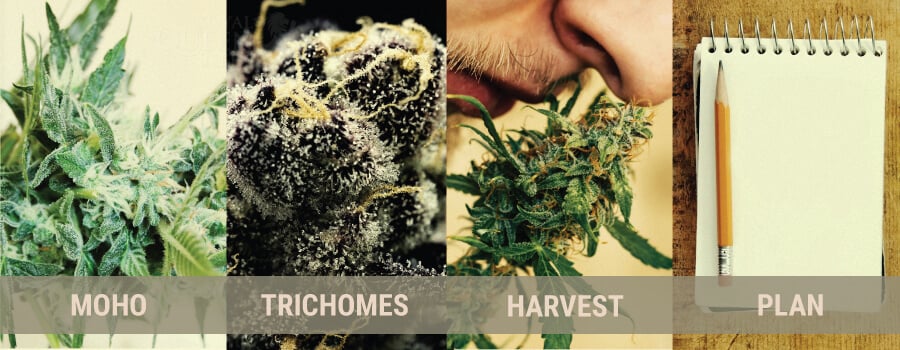
As autumn progresses, especially after the autumnal equinox when daylight hours drop below 12 hours, flowering continues in earnest. True flowers have formed and nestle individually or cluster together to form large buds. With “large” being the operative word, many strains will form colas as long as, and thicker than, an arm.
Resin development is obvious now, with trichomes clearly visible to the naked eye. Aromas are developing and plants are certainly using all the support they’ve been given to prevent branches from drooping under the weight of rapidly accumulating flowers.
It is time to be vigilant for mould problems, especially in the tropics where too much rain can cause bud rot or powdery mildew. Regular foliar applications during veg and early flower should prevent pathogens from taking hold. Good strain selection means inbuilt resistance to many pathogens, and a healthy immune system also makes plants resilient.
During the middle of autumn, early-flowering and feminized plants will be ready for harvest. They have had at least 10 weeks of solid flowering since differentiation. Watch those trichomes for indications of maturity. Typically, plants are harvested when trichomes turn a milky white, with some displaying deeper colourations. But this is a general rule, and experience will let you find what harvest time suits your particular tastes.
With larger plants, the uppermost flowers may be harvested to allow more light penetration into the lower parts of the plant. A two or three-stage harvest ensures that the complete plant reaches maturity, with upper and outermost flowers maturing first, and lower and inner flowers maturing last.
Late autumn is when harvest comes around for most cannabis growers. The shorter, cooler days with red-shifted light over the past month have intensified resin production, and aromas are now at their most complex. Individual calyxes and trichomes are swollen with resin, and flowers are firm to the touch and super sticky.
Trichome inspection is the one skill that needs to be developed to properly identify mature cannabis. A jeweler’s loupe, magnifying glass, or microscope are invaluable tools when determining cannabis maturity.
Larger, sativa-dominant plants may keep maturing into the final weeks of autumn. Especially those that are being harvested in stages, where the lowest buds can stay on the plant until winter is in the air. The colder weather brings out stunning “cool” colours in cannabis flowers.
AND AROUND WE GO
It will be winter soon, and the merry cannabis growing carousel continues to turn. The successful growing season has rendered plenty of cured, high-quality bud. Satisfied growers are settling in for winter again, and getting ripped while pondering next year’s growing season.


























